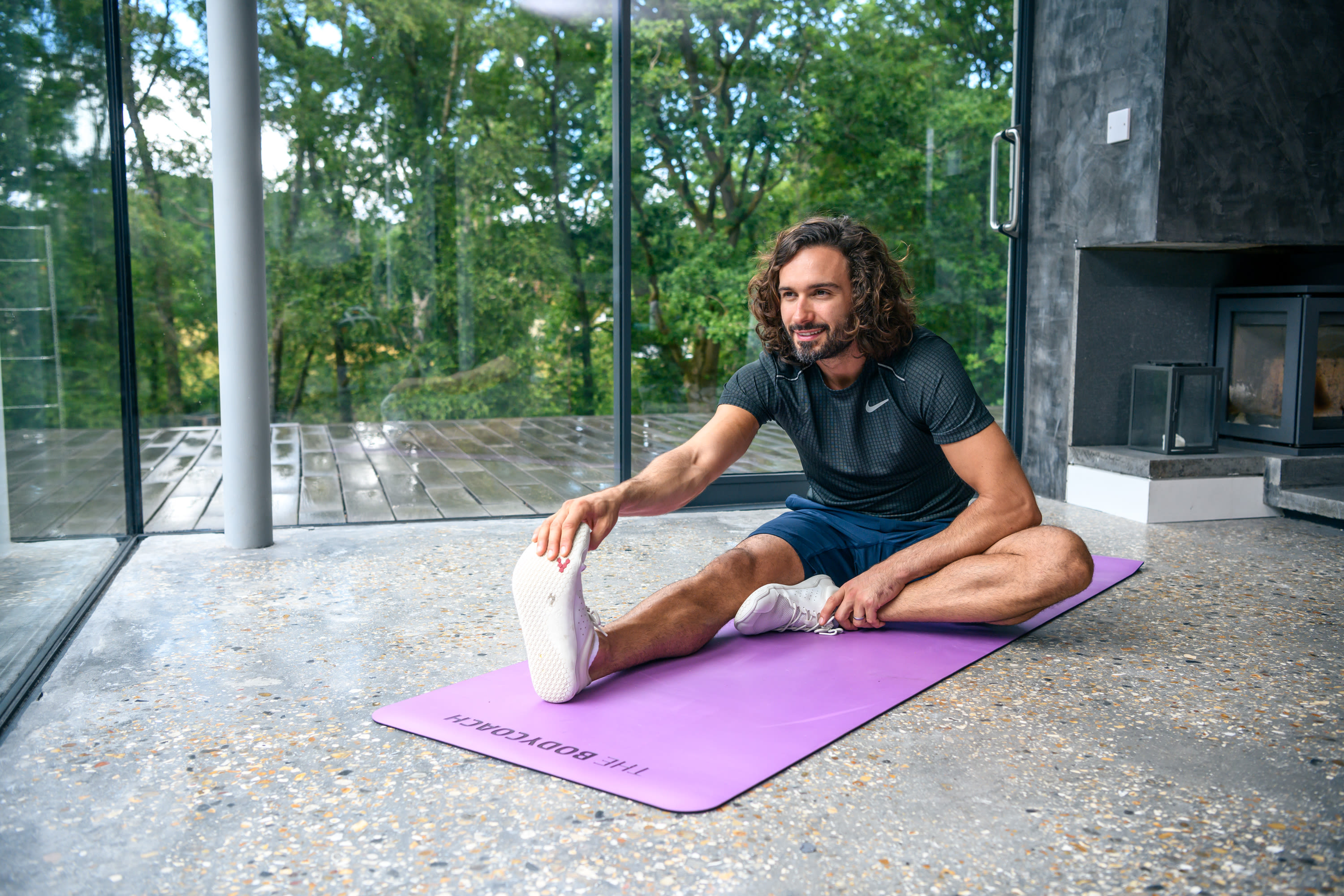You’ve been working hard at the gym, pushing yourself to new limits, and striving to achieve your fitness goals. But did you know that rest days are just as essential as your intense workouts? Taking the time to rest allows your body to recover, repair, and grow stronger. It may seem counterintuitive, but rest days are crucial for maximizing your fitness gains. In this article, we will explore the benefits of rest days, the science behind rest and recovery, different rest day strategies, the importance of nutrition, and the mental aspect of taking a break. So, let’s dive in and discover the key to achieving optimal fitness results.
Benefits of rest days for fitness gains
Rest days are not only necessary for your overall well-being but also for maximizing your fitness gains. By taking regular rest days, you allow your body to recover and repair the muscle fibers you’ve worked during your intense workouts. This leads to muscle growth and strength gains. Rest days also help prevent overtraining, reduce the risk of injuries, and improve performance in the long run. So, don’t underestimate the importance of rest days in your fitness journey. Embrace them as a vital part of your routine to reap the benefits and achieve your fitness goals.
Importance of proper recovery for muscle growth
Proper recovery is crucial for muscle growth. When you exercise, you create small micro-tears in your muscles. It is during the recovery phase that these tears are repaired, leading to muscle growth and strength gains. Without sufficient recovery time, your muscles can’t properly repair themselves, which can hinder your fitness progress. Rest days allow your body to replenish energy stores, regulate hormone levels, and optimize protein synthesis, all of which contribute to muscle growth. So, make sure to prioritize proper recovery to maximize your fitness gains.
Understanding Rest Days

Rest days are scheduled periods of rest from intense physical activity. They are essential for your body to recover and repair itself after workouts. During rest days, you give your muscles, joints, and connective tissues time to heal and rebuild. Additionally, rest days help prevent overtraining and reduce the risk of injury. It’s important to listen to your body and understand the signs of fatigue and overexertion. By incorporating rest days into your fitness routine, you can optimize your performance, improve muscle growth, and prevent burnout. Remember, rest days are just as crucial as your training days for maximizing your fitness gains.
What are rest days and why are they necessary?
Rest days are scheduled periods of rest from intense physical activity. They are essential for your body to recover and repair itself after workouts. During rest days, you give your muscles, joints, and connective tissues time to heal and rebuild. Additionally, rest days help prevent overtraining and reduce the risk of injury. It’s important to listen to your body and understand the signs of fatigue and overexertion. By incorporating rest days into your fitness routine, you can optimize your performance, improve muscle growth, and prevent burnout. Remember, rest days are just as crucial as your training days for maximizing your fitness gains.
The science behind rest and recovery

During rest and recovery, several physiological processes occur in your body that facilitate muscle repair and growth. When you rest, your body replenishes energy stores, such as glycogen, and repairs damaged muscle tissue. Rest days also give your nervous system time to adapt to the demands of exercise. Additionally, rest days help regulate hormone levels, such as cortisol, which can become imbalanced with excessive exercise. By understanding the science behind rest and recovery, you can appreciate the importance of incorporating rest days into your fitness routine for optimal results.
Rest Day Strategies
Rest Day Strategies: To maximize your fitness gains, it’s important to have effective rest day strategies. One approach is to completely abstain from any form of exercise on your rest days. This allows your body to fully recover and recharge. Another strategy is to incorporate active recovery techniques, such as light stretching or low-intensity activities like yoga or walking. This helps improve blood flow and reduce muscle stiffness. Additionally, you can use rest days to focus on other aspects of your health, such as foam rolling or practicing mindfulness. Experiment with different strategies to find what works best for you and helps optimize your rest and recovery.
Different approaches to rest days
There are different approaches to rest days when it comes to maximizing your fitness gains. One approach is to completely abstain from any form of exercise on your rest days. This allows your body to fully recover and recharge. Another strategy is to incorporate active recovery techniques, such as light stretching or low-intensity activities like yoga or walking. This helps improve blood flow and reduce muscle stiffness. Additionally, you can use rest days to focus on other aspects of your health, such as foam rolling or practicing mindfulness. Experiment with different strategies to find what works best for you and helps optimize your rest and recovery.
Optimal frequency and duration of rest days

When it comes to rest days, the optimal frequency and duration will vary depending on your individual needs and training intensity. As a general guideline, it is recommended to have at least one rest day per week to allow for proper recovery. However, if you are engaging in high-intensity workouts or have specific goals, you may require multiple rest days throughout the week. The duration of rest days can also vary, but typically a full day of rest is sufficient to allow your body to repair and rebuild. Listen to your body and adjust your rest days accordingly to ensure optimal recovery and maximize your fitness gains.
Active Recovery Techniques
During your rest days, it’s important to stay active with low-impact activities to promote blood flow and aid in recovery. Incorporate activities such as walking, swimming, or cycling into your rest day routine. These activities help to flush out metabolic waste, reduce muscle soreness, and maintain joint mobility. Additionally, using foam rollers or participating in yoga or stretching exercises can help release tight muscles and improve flexibility. Remember, the goal of active recovery is to engage in lighter, less intense activities that still promote circulation and keep your body moving.
Activities to include in your rest day routine
On your rest days, it’s important to stay active with low-impact activities that promote blood flow and aid in recovery. Consider activities such as walking, swimming, or cycling. These activities help flush out metabolic waste, reduce muscle soreness, and maintain joint mobility. You can also incorporate foam rolling or participate in yoga or stretching exercises to release tight muscles and improve flexibility. Remember, the goal of active recovery is to engage in lighter, less intense activities that still promote circulation and keep your body moving.
Benefits of active recovery for muscle repair

Active recovery on rest days can have numerous benefits for muscle repair. Engaging in low-impact activities such as walking, swimming, or cycling helps increase blood flow to the muscles, delivering necessary nutrients and oxygen for repair. This increased circulation also helps remove metabolic waste, reducing muscle soreness and inflammation. Additionally, activities like foam rolling, yoga, or stretching can release tension and promote flexibility, improving muscle function and preventing injury. By incorporating active recovery into your rest day routine, you can facilitate the repair and recovery process, leading to enhanced muscle growth and overall fitness gains.
Nutrition and Rest Days
Proper nutrition plays a crucial role in maximizing your recovery on rest days. It is important to fuel your body with the right nutrients to support muscle repair and growth. On rest days, focus on consuming a balanced diet that includes lean proteins, complex carbohydrates, and healthy fats. Protein is especially important as it provides the building blocks for muscle repair. Additionally, staying hydrated and incorporating antioxidant-rich foods can help reduce inflammation and promote overall recovery. Remember to listen to your body’s hunger cues and adjust your calorie intake accordingly to support your fitness goals.
Importance of proper nutrition on rest days
Proper nutrition is crucial on rest days to support your body’s recovery process and maximize fitness gains. During rest days, your muscles are repairing and rebuilding themselves, and they require the right nutrients to do so effectively. Consuming a balanced diet that includes lean proteins, complex carbohydrates, and healthy fats provides the necessary building blocks for muscle repair. Additionally, staying hydrated and incorporating antioxidant-rich foods can help reduce inflammation and promote overall recovery. Remember that nutrition is just as important on rest days as it is on training days for optimizing your fitness progress.
Nutritional strategies for maximizing recovery
To maximize your recovery on rest days, it’s important to focus on nourishing your body with the right nutrients. Here are some key strategies to consider:
- Protein intake: Consume an adequate amount of protein to support muscle repair and growth. Aim for about 20-30 grams of high-quality protein with each meal.
- Carbohydrates: Include complex carbohydrates in your meals to replenish glycogen stores and provide energy for optimal recovery.
- Healthy fats: Incorporate sources of healthy fats such as avocados, nuts, and olive oil, which can help reduce inflammation and support overall recovery.
- Hydration: Stay hydrated throughout the day by drinking plenty of water. Dehydration can hinder the recovery process.
- Antioxidant-rich foods: Include fruits and vegetables in your diet, as they are packed with antioxidants that can help reduce muscle inflammation and promote recovery.
By following these nutritional strategies, you can maximize your body’s recovery process and ensure you’re ready for your next workout.
The Mental Aspect of Rest Days

Rest days are not just important for physical recovery, but also for your mental well-being. Taking time off from intense workouts allows your mind to relax and rejuvenate. It gives you the opportunity to focus on other aspects of your life and engage in activities that you enjoy. Rest days can help prevent burnout and maintain a healthy mindset towards fitness. Use this time to practice mindfulness, meditation, or engage in hobbies that bring you joy. Embrace rest days as a vital part of your fitness journey for both your body and mind.
The psychological benefits of rest days
Rest days not only benefit your physical recovery but also have significant psychological benefits. Taking time off from intense workouts allows your mind to relax and rejuvenate. It can help reduce stress and anxiety levels, improve mood, and enhance overall mental well-being. Rest days give you the opportunity to focus on other aspects of your life and engage in activities that you enjoy, promoting a healthy work-life balance. Embrace rest days as a chance to practice mindfulness, meditation, or engage in hobbies that bring you joy, and let your mind recharge for optimal fitness gains.
Tips for staying motivated during rest days
- Plan enjoyable activities: Use your rest days to engage in activities you truly enjoy, such as going for a walk, practicing yoga, or spending time with friends and family.
- Set goals: Use rest days to set new fitness goals or reassess your progress. This can help maintain your motivation and keep you focused on your long-term objectives.
- Focus on recovery: Remind yourself that rest days are an essential part of the recovery process. Embrace the opportunity to rest and give your body the time it needs to repair and rebuild.
- Stay connected: Use rest days to connect with others who share similar fitness goals. Join online fitness communities or find a workout buddy to stay accountable and motivated.
- Visualize success: Spend some time visualizing your progress and success during your rest days. This can help keep you motivated and excited to get back into your workouts.
- Practice self-care: Use your rest days as a time for self-care. Take a relaxing bath, get a massage, or do something that makes you feel good and promotes overall well-being.
- Track your progress: Keep a record of your workouts and progress, and review it on rest days. Seeing how far you’ve come can boost your motivation and inspire you to continue working towards your fitness goals.
Remember, rest days are an essential part of a successful fitness journey. Embrace them, stay motivated, and use them to recharge and come back even stronger.

